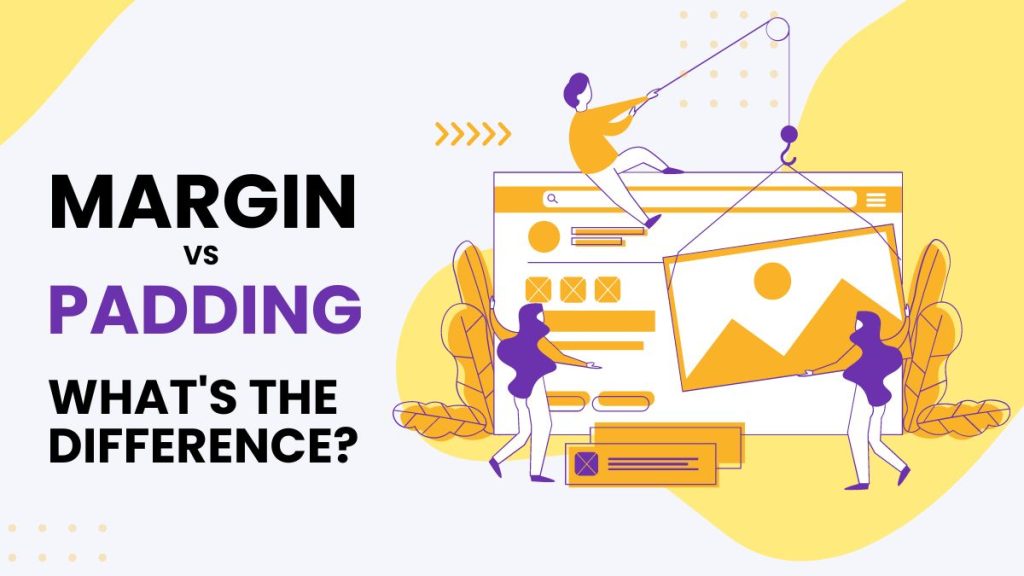Padding vs Margin in CSS

Padding vs Margin in CSS?
For anyone interested in learning how to create a website, understanding the difference between padding and margin in CSS is essential. Padding and margin are two fundamental CSS properties used to control the space between elements on a page.
Knowing the difference between the two and how to control them is fundamental to creating a website that looks professional, organized, and aesthetically pleasing. By understanding how padding and margin work together, you can create a page that has the perfect balance of whitespace, making it easier to read and navigate.
Table Comparison: Padding vs Margin
This table will help you understand the differences between padding and margin in CSS and how to use them to create a cohesive and aesthetically pleasing website.
| Aspect | Padding | Margin |
|---|---|---|
| Definition | Space between the content and the border of an element. | Space outside the border of an element, creating separation from neighboring elements. |
| Affects | Affects the area inside the element. | Affects the area outside the element. |
| Visibility | Padding is included in the element’s dimensions. | Margin is not included in the element’s dimensions. |
| Collapsing | Padding does not collapse between adjacent elements. | Margins may collapse, reducing the space between elements. |
| Overlapping | Padding can cause content to overlap adjacent elements or the border. | Margins provide a clear separation between elements. |
| Background | Padding is part of the element’s background. | Margin is not part of the element’s background. |
| Shorthand | Can be set using the padding shorthand property. | Can be set using the margin shorthand property. |
| Individual Sides | Padding can be set for each side (top, right, bottom, left) individually. | Margin can be set for each side individually. |
| Box Model | Padding is included in the element’s box model calculation. | Margin is not included in the element’s box model calculation. |
| Usage Example | Creating spacing within buttons, boxes, or content areas. | Creating space between elements, like margins around paragraphs or divs. |
| Negative Value | Can be set as a negative value to reduce the space inside the element. | Can be set as a negative value to bring elements closer together. |
What is padding in CSS?
Padding in CSS is the space between an element’s content and its border. It is used to create space around an element, inside of any defined borders. Padding can be applied to all four sides of an element (top, right, bottom, and left). You can also apply it individually to each side, allowing for more complex spacing situations.
Web developers use padding to separate elements from one another. For example, you can use padding to add space between paragraphs, or between a header and the body of text. Additionally, you can use it to push an element away from the edges of a page.
Padding is specified using the padding property in CSS. The padding property takes a length value that defines the amount of padding to apply. This length can be specified using absolute units such as pixels, ems, or rems. It can also be specified using relative units such as percentages.
For example, the following code applies 10px of padding to all four sides of an element:
css
div {
padding: 10px;
}The padding property can also take individual values for each side. For example, the following code applies 5px of padding to the top and bottom of an element, but 10px of padding to the left and right sides:
css
div {
padding: 5px 10px;
}Padding is an important part of any web page design. It can be used to provide better visual hierarchy and give elements a more polished look. By properly using padding, you can create beautiful, balanced designs.
What is “margin” in CSS?
In CSS, margin is the space between elements. It is used to create a certain amount of distance between different elements (not including a border) on a page. Margin can be applied to any element in an HTML document, including images, text, tables, and other elements.
The margin property allows you to control the amount of space between elements on a page. It can also be used to create a better visual structure on a page. The margin property is typically measured in pixels or a percentage of the available space.
By default, all margins are set to 0 (zero). To adjust the margins for an element, you need to specify a value for each side, such as “margin-top: 20px;”. You can also use the shorthand “margin: 20px;” to set all four sides at once. In CSS, the margin properties are “margin-top,” “margin-right,” “margin-bottom,” and “margin-left.”
Margins can be used to create visual hierarchies on a page or to separate elements from each other. They can also be used to create columns, by setting the margins on either side of an element.
READ MORE: 5 CSS Frameworks to Make Web Design Faster
Differences between padding and margin
The main difference between padding and margin is that margin controls the space outside of an element, while padding controls the space inside of an element. While both can be used to create the right amount of whitespace on a page, there are times you want to use one over the other.
If you want to increase the amount of space inside an element, you can use padding. In the case that you have a black border, padding will push that extra space outward to your defined amount of padding. But if you want to increase the amount of space outside an element with a border, you can use a margin.



Related Web Development
A Step-by-Step Guide To Becoming A Web Designer
What Is the Difference Between UI and UX Designers?
The Benefits of Using .NET for Developing Robust Software
Django vs Flask: Which Framework is Best?
How To Become A Web Developer: The Ultimate Guide
5 CSS Frameworks to Make Web Design Faster
Nginx vs Apache: Which is the Best Web Server?
The A-Z Web Development Guide